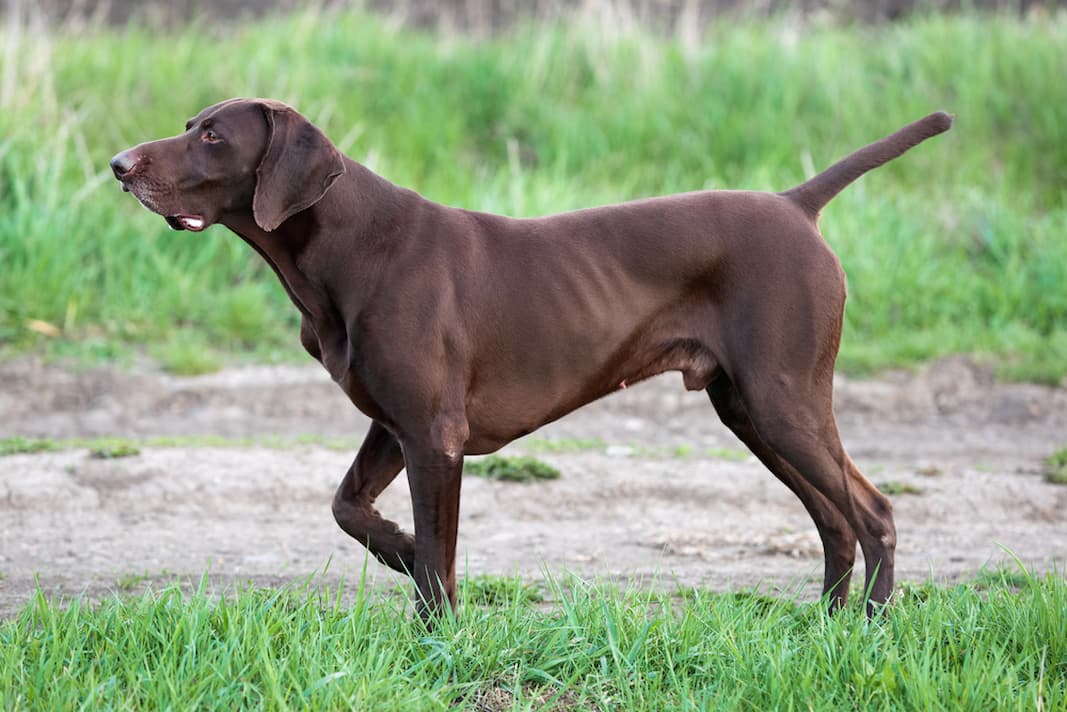The Pointer boasts an athletic, muscular physique wrapped in smooth, gleaming fur of a few dominant color, accented by spots on the chest and belly. Their head always stands proudly erect, while the tail energetically sways from side to side. And, before we dive in more if you were pondering the origin of their name, it’s just as you might have guessed – their role was to “point” the hunter in the direction of the prey. How did they master this art? Simply through the iconic pointed stance, marked by a raised front leg and tail, and a head tilted forward toward the prey.
The pointer is a dynamo of versatility and energy, excelling in every endeavor. With a keen hunting instinct, it’s crucial to leash up for walks, ensuring control. If your yard is fenced, a minimum height of 5 feet is advised, given the pointer’s remarkable tracking skills. Beyond its physical prowess, this breed doubles as an excellent guard dog—unfazed by strangers, territorial, and ready to go the extra mile to protect its beloved family members.




















